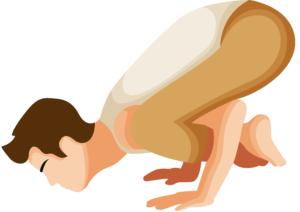Shoulder-Pressing (Bhujapidasana)
Pose Overview
| Common Name | Shoulder-Pressing |
| Traditional Sanskrit Name | Bhujapidasana |
| Sanskrit Name Pronunciation | boo-juh-pee-DAHS-uh-nuh |
| Pose Difficulty | Intermediate |
| Drishti
Drishti is the gaze or visual focus point during yoga poses.
Learn more about Drishti |
Straight ahead or the nose |
Shoulder-Pressing, also known as Bhujapidasana, is an arm-balancing yoga pose that strengthens the shoulders and opens the chest. This pose requires a combination of upper body strength, balance, and flexibility. It is a challenging pose that is often considered to be an intermediate level pose, but can be modified for beginners or advanced practitioners.
Benefits of Shoulder-Pressing
Shoulder-Pressing is a great pose for building upper body strength, particularly in the shoulders and arms. It also helps to open the chest and improves balance and coordination. Additionally, it can help to strengthen the core and improve focus and concentration.
How to Enter Shoulder-Pressing
Start in a low plank position with your wrists underneath your shoulders and your fingers spread wide. Press your hands and feet into the ground and lift your hips up towards the ceiling. Slowly shift your weight forward and lift your left foot off the ground. Bend your left elbow and bring your left knee towards your left elbow. Press your left foot into your left hand and lift your right foot off the ground. Try to straighten your left arm and stack your right knee on top of your left knee. Keep your gaze forward and engage your core.
How to Exit Shoulder-Pressing
Slowly release your right foot back to the ground. Lower your left foot to the ground, and release the pose. Rest in child's pose or downward-facing dog to release any tension in the shoulders.
Common Shoulder-Pressing Modifications & Variations
If you are unable to lift both feet off the ground, try lifting one foot at a time and holding the pose for a few breaths before switching sides. To make the pose easier, you can also practice with your knees on the ground instead of lifting both feet off the ground. To make the pose more challenging, you can try lifting both feet off the ground and straightening both arms.
Common Mistakes with Shoulder-Pressing
Placing the wrists too far forward or too far back can cause strain in the shoulders. Make sure your wrists are directly under your shoulders. Arching the back can also cause strain in the shoulders. Keep your core engaged and maintain a neutral spine.
Safety Guidance
If you have any shoulder injuries or pain, it is best to avoid this pose or consult with a yoga teacher before practicing. Make sure to use the proper alignment and engage your core to protect your lower back.

